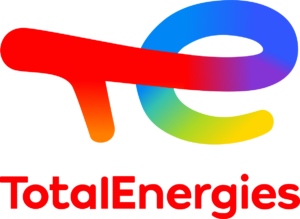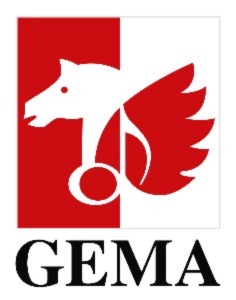Deutsche Telekom
Learn how Deutsche Telekom transformed from waterfall development on a monolithic application to an agile, microservices-based architecture.
Learn how Deutsche Telekom transformed from waterfall development on a monolithic application to an agile, microservices-based architecture.
Today, Telekom IT has completely overhauled its systems, enabling it to now:
- Visualize complex logic in one place
- Easily align human and automated tasks
- Use the same language for business and development, along with native Java support
- Easily embed the lightweight Camunda engine in various microservices
- Visualize real-time operations with Camunda Cockpit, seeing at-a-glance the progress of any process
- Enable compliance-by-default across global distributed teams, multiple vendors and sensitive data
Monolithic Problems
Deutsche Telekom IT GmbH is the internal IT service provider of Deutsche Telekom AG. With around 9,700 employees globally and a total budget of around €1.9 billion, it’s responsible for the design, development and operation of all its own and transferred IT systems to support business processes at Deutsche Telekom and its subsidiaries.
In 2007 Deutsche Telekom IT began using an Oracle BPEL engine to build and run BPM workflows and process automation. But this monolith created a number of issues that affected both the business and user experience:
- A lengthy time-to-market, lasting more than 12 months
- Vendor lock-in limited the implementation of new features — it took five days to set up or make changes to environments
- Releases took, on average, 1000 people-days or roughly three months to realize
- Regression testing took around two days to process all test cases
“We need to be on time, we can’t wait seven days to process an order, we can’t wait seven days to respond to something, we need to be always ahead and always responsible,” explained Willm Tüting, Managing Director, conology GmbH, who has worked with Deutsche Telekom IT for more than 10 years.
Partial Agility is Nonsense
In 2017, running a 10-year-old monolithic system, Deutsche Telekom IT took the first steps towards modernising its processes by adopting a ‘partially agile’ development approach, working in three-month sprints.
“We created several processes to deliver small fixes faster, but it made life much more complex,” said Willm.
All fixes had to be delivered together with larger change requests, which took considerable people-hours to accomplish. In addition, they were still struggling with the monolithic BPEL system, which didn’t allow for true agility.
Laying the grounds for change
In 2017 Deutsche Telekom began investing in fiber optic cables to deliver a better user experience. With this significant upgrade in hardware came the opportunity to revolutionize Deutsche Telekom IT’s outdated systems. This saw a complete change in both the operating system and DevOps approach, guided by three goals:
- Speed up: Change development from BPEL to Java and modus operandi from waterfall to agile
- Cross-functional teams: Change from skill-based teams to international cross-functional teams
- Efficiency: Increase development efficiency by using Camunda, SPRING and other state-of the art technologies.
From One Vendor to 43 Frameworks
With these three goals in mind, Deutsche Telekom IT implemented a microservices-based architecture, in the cloud, with Camunda BPM engines running in many microservices. Friedbert Samland Project Manager IT Application, Deutsche Telekom IT, explained the new system is comprised of:
- Microservices: This approach partitioned the monolith and allows for cross-functional work. There is no GUI, instead it is now a pure BPMN system. “Inspired by Camunda Co-Founder Bernd Ruecker’s microservices cheat sheet, we run Camunda Engines in many microservices, talking directly to a message broker,” explained Friedbert.
- Cloud: The power of the cloud dramatically reduced runtimes and enables a staged, fine-gained delivery approach. With no ready-made solution, Telekom IT designed its own Kubernetes-based approach
- SAFe agile framework: Introducing a new organization with shorter end-to-end cycle-times has enabled flexibility and speed
- DevOps philosophy: Automation and self-service are key to Telekom IT’s DevOps philosophy and ensure quality and speed.
Camunda has Changed the Game
One of the greatest advantages of Deutsche Telekom IT’s Camunda revolution has been enabling ‘compliance-by-default’. As a globally distributed business, with teams working across the world with multiple vendors and sensitive data, this highly automated solution was required. The result is an architecture that enables compliance-by-default and ensures data security.
Deutsche Telekom IT has also built its own internal process monitoring platform, inspired by the token concept employed in Camunda’s Cockpit, so users can see at-a-glance the progress of any process.
In addition, as well as supporting and operating a highly flexible DevOps philosophy, Camunda has enabled Deutsche Telekom IT to visualise complex logic in one place, easily align human and automated tasks and use the same language for business and development with BPMN.
For those who are thinking of following in Deutsche Telekom IT’s footsteps, Willm has sage advice: “Choose your stack wisely, don’t start with a full stack, choose things that add the most benefits to your needs. Think big, start small, don’t try to get the holy grail in the first attempt – evolve to where you want to be.”
Bots and Process Improvements at the Same Time
As part of Deutsche Telekom’s digital transformation, the company is using Camunda to automate customer service processes. Take a insider’s peek into one of the largest Robotic Process Automation (RPA) implementations in Europe to hear how Deutsche Telekom scaled to 3,000 bots, saving millions of Euros.
Learn Deutsche Telekom’s:
- Reasons to start automation with RPA and benefits & results achieved with that approach
- Lessons learned from managing and deploying 3,000 RPA bots
- 3 step approach to modernize front-end automation bots with back-end API services
- Reasons why Deutsche Telekom turned to a central platform to orchestrate and automate their processes end-to end
Similar Case Studies





